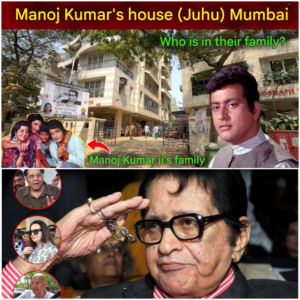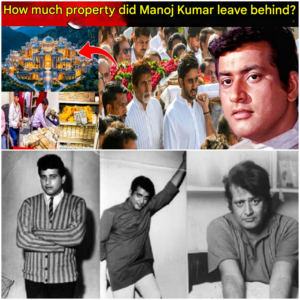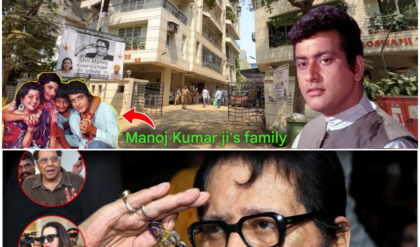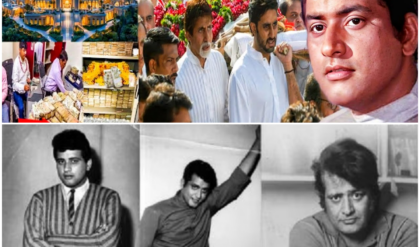How did a father fabricate a false story of his son’s death to get term insurance of Rs 2 crore?
.
.
.
play video:
Delhi Shock: Father Fakes Son’s Death to Claim ₹2 Crore Insurance – Full Conspiracy Exposed by Police
New Delhi, India – March 2025 — In one of the most shocking insurance fraud cases to surface in recent years, Delhi Police uncovered a meticulously planned conspiracy in Najafgarh where a father, with the help of his son and a lawyer, faked the son’s death to claim a ₹2 crore term insurance payout.
The case, which initially appeared to be a routine road accident, unraveled as a sensational tale of greed, betrayal, and criminal manipulation—where rituals were fabricated, false documents prepared, and even a fake cremation was conducted.
Here’s a complete breakdown of the shocking incident that has left citizens stunned and law enforcement applauded for their swift action.
The Call That Raised Eyebrows
It all began on March 5, 2025, when a PCR call was made from Najafgarh, reporting a road accident involving a motorcycle. The caller claimed that two bikes had collided and one person had died on the spot.
When the Investigating Officer (IO) attempted to contact the caller for further details, he received no immediate response. It wasn’t until a second call was made that the man on the other end—Satish, a resident of Najafgarh—answered and claimed that his son, Gagan, had died in the accident. According to him, the cremation had already taken place.
Something didn’t sit right with the officer.
On the directive of ACP Dwarka, a detailed inquiry was initiated. What followed was a stunning revelation of a premeditated crime that had been months in the making.
The Mastermind: A Father’s Deadly Plan
Upon investigation, it was found that Satish, the father, had taken out a ₹2 crore term insurance policy on his son Gagan just three months prior to the incident. With significant debts looming—tractor loans, agricultural losses, and local borrowings—the family was financially strained.
Police say this wasn’t a crime of impulse—it was a carefully calculated conspiracy.
The plan included not only father and son but also an accomplice who was shockingly—a practicing advocate. The three together planned to stage a fake accident and death, conduct a mock cremation, and file the necessary documents to process an insurance claim worth ₹2 crore.
Building the Illusion: Fake Accident, False Hospital Records
As per DCP Ankitt Singh of Dwarka, the execution of the plan began with the staged accident. Satish and Gagan traveled to a rural health center after the so-called incident, where they convinced hospital staff—through bribes—to issue fake first aid and referral documents. These documents falsely established that Gagan had been treated for fatal injuries.
From there, they arranged for a local private hospital to generate more supporting medical records to bolster their claim.
On the same day, they had a cremation slip issued from a crematorium in Hapur, Uttar Pradesh. This slip was entirely fabricated. The cremation itself was conducted with the help of close family members who performed all rituals under the assumption—or pretense—that Gagan was dead.
In a horrifying twist, this included performing the last rites, collecting ashes, and conducting mourning rituals, all while Gagan was very much alive and in hiding.
The Suspicious Gaps and Police Breakthrough
Despite the detailed setup, there were flaws in the plan. When ASI Rajendra, the IO from Najafgarh police station, started verifying facts, inconsistencies began to surface.
The team started by scanning CCTV footage from the area where the supposed accident took place. Not a single camera showed any evidence of a crash. No vehicles. No blood. No onlookers.
Simultaneously, neighbors of Satish reported no signs of grief or disturbance at the home around the time of Gagan’s alleged death. When questioned, they said the funeral was conducted quietly, with very few people in attendance—an unusual move in traditional Hindu customs where large crowds typically attend the cremation.
The police then expanded their investigation to include electronic evidence, including mobile tower locations of Satish and Gagan, which placed both men in the same locations well after the “death.” A red flag was raised.
The Legal Accomplice: Advocate’s Role Under Scrutiny
Perhaps the most disturbing element of the case was the involvement of a legal professional.
According to DCP Ankitt Singh, the advocate involved in the case was responsible for drafting false documents, advising on loopholes in legal procedures, and helping prepare the insurance paperwork. He was also allegedly promised a substantial commission—nearly ₹7 lakh—from the insurance claim once it was approved.
This raises serious questions about professional ethics and the legal system’s vulnerability to misuse.
Motive: Crushing Debt and Desperation
The financial situation of the family appears to have been the root motive. Police confirmed that both Satish and Gagan were under significant pressure from loans, unpaid dues, and community lenders.
The term insurance plan was strategically purchased three months before the incident—just long enough to establish eligibility for the claim while short enough to arouse suspicion.
But in their desperation, they underestimated the vigilance and methodical approach of Delhi Police.
Public Reaction and Police Praise
Once the news broke, the story caught fire on news channels and social media. Citizens were appalled by the lengths to which the father-son duo had gone. The idea of a parent performing fake last rites for their child sent shivers down the spine of many.
Law enforcement agencies, on the other hand, received widespread appreciation.
“The Najafgarh police station team, particularly SHO and ASI Rajendra, have done exemplary work. Their quick thinking, relentless investigation, and use of forensic tools helped unravel a case that would have otherwise resulted in a ₹2 crore fraud,” said DCP Singh.
Arrests and Legal Proceedings
Both Satish and Gagan have been arrested and are currently in judicial custody. The advocate involved is also under investigation, and charges are expected to be filed soon.
They have been booked under multiple IPC sections including:
Section 420 – Cheating
Section 120B – Criminal Conspiracy
Section 467/468/471 – Forgery and Use of Forged Documents
Section 182 – Providing false information to a public servant
The insurance company involved has also been informed and has frozen the claim. Additional civil and financial penalties may be imposed.
How the Community Was Fooled
Investigators revealed that the family held a very small ceremony with only close relatives and a few neighbors. The restricted access helped them avoid scrutiny. They even refused to receive extended condolences or allow visits—citing religious rituals as the reason.
This limited interaction is what allowed them to complete the cremation without significant suspicion, until the police started questioning every detail.
Lessons Learned: The Need for Stringent Oversight
This case highlights the importance of rigorous verification by insurance agencies, hospitals, and cremation grounds. It also points toward the urgent need for a centralized death registration and verification system, particularly in high-population areas like Delhi NCR.
While term insurance plays a vital role in securing families financially, it is cases like these that raise the risk perception for insurers and can delay legitimate claims for genuine victims.
Final Words: A Tale of Greed, Lies, and Broken Bonds
The Najafgarh case is more than a failed fraud—it’s a story of broken trust, a father’s betrayal, and a deeply disturbing abuse of tradition. To simulate death is one thing—but to deceive a community, conduct a fake cremation, and manipulate institutions for monetary gain is an entirely different level of criminality.
In their attempt to erase a life for financial gain, Satish and Gagan erased something far more important—their honor, their humanity, and the trust of society.
And in the end, as Delhi Police exposed the truth, the lesson remains: lies may travel fast, but justice travels faster.
News
How was Manoj Kumar able to keep this secret hidden for 60 years? Manoj Kumar Secret Love Story
How was Manoj Kumar able to keep this secret hidden for 60 years? Manoj Kumar Secret Love Story . . . play video: How Manoj Kumar Kept His Secret Love Hidden for 60 Years In the golden era of Indian…
Fans were in tears when they found out what happened to Avirbhav? Superstar Singer Season 3 | Superstar Singer Avirbhav
Fans were in tears when they found out what happened to Avirbhav? Superstar Singer Season 3 | Superstar Singer Avirbhav. . . . play video: What Really Happened to Avirbhav? Clearing the Air on the Superstar Singer Season 3 Winner’s…
Visit Manoj Kumar’s House in Mumbai | Manoj Kumar Family | Shocking Facts!
Visit Manoj Kumar’s House in Mumbai | Manoj Kumar Family | Shocking Facts! . . . play video: Inside Manoj Kumar’s Home in Juhu: A Final Glimpse Into the Life of Bharat Kumar After His Passing On April 4, 2025,…
Manoj Kumar News Update: Son gave a big statement on father’s death | Manoj Kumar Son
Manoj Kumar News Update: Son gave a big statement on father’s death | Manoj Kumar Son. . . . play video: Manoj Kumar News Update: Son Kunal Goswami’s Heartfelt Tribute—What Was Said at the Funeral of India’s ‘Bharat Kumar’ The…
How much property did Manoj Kumar leave behind? Who will be the owner? Manoj Kumar Net Worth
How much property did Manoj Kumar leave behind? Who will be the owner? Manoj Kumar Net Worth . . . play video: Bharat Kumar’s Final Bow: The Life, Death, and Legacy of Manoj Kumar—What He Left Behind The Indian film…
Manoj Kumar had become like this in his last days, this dangerous disease took his life! Manoj Kumar Death Reason
Manoj Kumar had become like this in his last days, this dangerous disease took his life! Manoj Kumar Death Reason . . . play video: End of an Era: The Final Days and Legacy of Manoj Kumar, Bollywood’s ‘Bharat Kumar’…
End of content
No more pages to load











